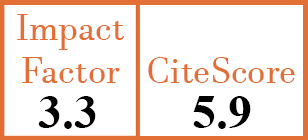Full Papers
Pulmonary nontuberculous mycobacteria disease and anti-neutrophil cytoplasmic antibody positivity: a retrospective analysis of long-term clinical outcomes including vasculitis onset
N. Oda1, H. Matsui2, N. Oya3, T. Suzuki4, R. Hazue5, R. Rokutanda6
- Department of Rheumatology, Kameda Medical Center, Chiba, Japan. oda.nobuhiro.2021@gmail.com
- Department of Clinical Epidemiology and Health Economics, School of Public Health, The University of Tokyo; and Clinical Research Support Division, Kameda Medical Center, Chiba, Japan.
- Department of Rheumatology, Kameda Medical Center, Chiba, Japan.
- Department of Nephrology, Kameda Medical Center, Chiba; and Department of Clinical Epidemiology, Graduate School of Medicine, Fukushima Medical University, Japan.
- Department of Rheumatology, Kameda Medical Center, Chiba, Japan.
- Department of Rheumatology, Kameda Medical Center, Chiba, Japan.
CER18771
Full Papers
Free to view
(click on article PDF icon to read the article)
PMID: 40964806 [PubMed]
Received: 29/03/2025
Accepted : 09/06/2025
In Press: 16/09/2025
Abstract
OBJECTIVES:
To investigate the positivity rate of anti-neutrophil cytoplasmic antibody (ANCA) and the incidence of ANCA-associated vasculitis (AAV) in pulmonary nontuberculous mycobacterial (NTM) disease.
METHODS:
We conducted a retrospective observational study using electronic medical records of patients diagnosed with pulmonary NTM disease who subsequently underwent testing for myeloperoxidase (MPO) or proteinase 3 (PR3) ANCA. We identified cases of vasculitis among these patients and documented those who developed AAV. Additionally, we reviewed the literature for previously reported cases of AAV following pulmonary NTM disease.
RESULTS:
We identified 63 patients with pulmonary NTM disease who subsequently underwent ANCA testing. Seven cases (11.1%) tested positive, predominantly for MPO-ANCA. Among them, five patients (71.4%) developed AAV, with three demonstrating concurrent NTM culture positivity at the time of AAV diagnosis. Three patients were diagnosed with microscopic polyangiitis, while the remaining two were diagnosed with granulomatosis with polyangiitis and eosinophilic granulomatosis with polyangiitis, respectively. In our case series of AAV, most patients developed glomerulonephritis. Additionally, a review of the existing literature revealed eight previously reported cases of AAV associated with pulmonary NTM disease.
CONCLUSIONS:
This study is one of the largest to investigate the proportion of patients positive for ANCA with pulmonary NTM infection. Our findings suggest an association between NTM infection and AAV and highlight the importance of measuring ANCA in patients with NTM. Further studies are needed to clarify the underlying mechanisms and identify risk factors.



